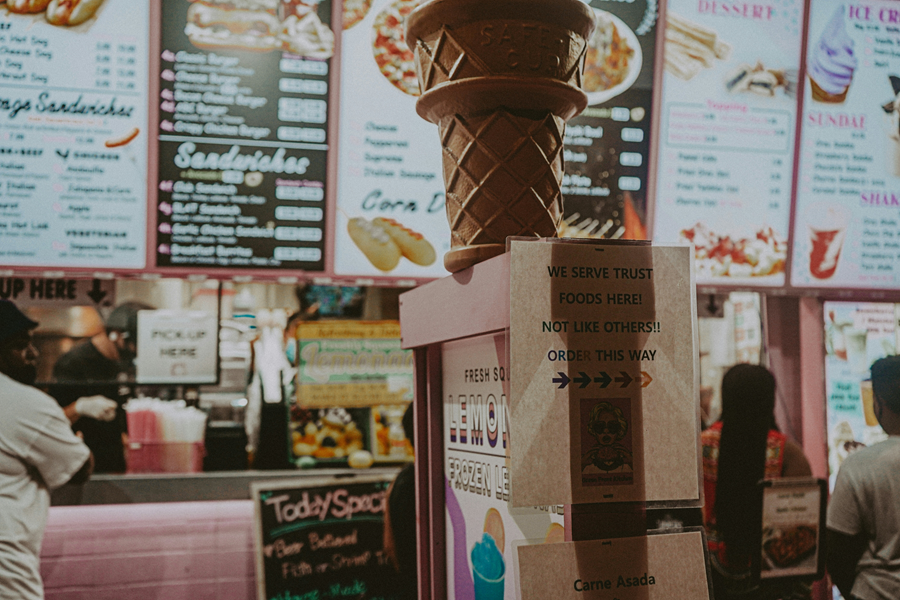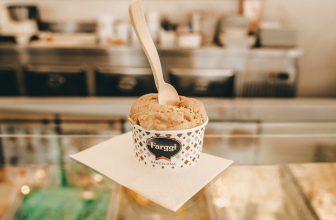Ice Cream Shop Profits: Uncovering the Path to Success

Ice Cream Shop Profits
Ice Cream Shop Profits:
Uncovering the Path to Success
Starting a successful ice cream shop can be an exciting venture with promising profitability. There are several key factors to consider when making your ice cream shop profitable.
This post will explore the critical elements contributing to profitability and provide insights on setting up and growing a successful ice cream business.
1. Business Model and Revenue Streams
Your ice cream shop’s profitability will depend on a solid business model and diverse and sweet revenue streams. Here are a few popular models:
Brick-and-Mortar Shop: A traditional storefront where customers come to buy ice cream.
Mobile Operations: Food trucks or mobile carts that can reach different locations. Mobile coffee trucks can expand
Wholesale and Catering: Providing ice cream for events or to other businesses.
You will want to setup an ice cream shop business structure that works for you. Many successful ice cream shops combine several models to maximize revenue potential. Consider how you can integrate additional revenue streams to diversify your business.
2. Location and Market Research
Location is a significant factor in determining profitability. Consider the following when choosing a location:
Foot Traffic: Areas with high pedestrian traffic, like downtown or near tourist attractions, can attract more customers.
Demographics: Choose a location with a demographic profile that matches your target market.
Competition: A highly competitive area might require more differentiation to stand out.
Conduct thorough market research to understand your ice cream customer base and ice cream shop competitors. This research will guide your ice cream shop business strategy and help identify unique selling points.
3. Menu Design and Product Differentiation
An attractive menu with unique and diverse offerings can drive profitability. Consider these tips for menu design:
Variety: Offer various flavors, including classics and innovative options. Expand your menu to appeal to your target market.
Customization: Allow customers to personalize their ice cream with toppings or mix-ins.
Dietary Options: Include vegan, gluten-free, and dairy-free choices to attract a broader customer base.
Unique products and flavors can help your shop stand out, encouraging repeat business and word-of-mouth marketing.
Further Reading: Are Ice Cream Shops Profitable?

4. Cost Control and Pricing Strategy
Controlling ice cream shop costs and setting the right pricing strategy are critical to profitability. Sometimes, runaway costs can melt away your ice cream shop profits.
Therefore, consider these aspects:
Ingredients and Supplies: Find reliable suppliers that offer quality products at competitive prices.
Labor Costs: Balance staff levels to meet demand without overstaffing.
Pricing Strategy: Set prices that reflect the quality of your products while remaining competitive in your market.
A well-planned pricing strategy considering overhead and desired profit margins will help ensure long-term sustainability.
5. Marketing and Customer Experience
An effective marketing strategy and exceptional customer experience can drive profits by attracting and retaining customers. Consider the following marketing tactics:
Social Media: Engage customers with visually appealing content and promotions through social media platforms.
Community Involvement: Partner with local events or charities to increase visibility and build goodwill.
Sweet Loyalty Programs: Implement sweet loyalty programs to encourage repeat ice cream business and customer retention.
Creating a positive ice cream customer experience is essential for building a loyal customer base. Friendly service, a clean environment, and engaging interactions can boost customer satisfaction.
6. Budgeting for Success
Budgeting is critical for any profitable business, including an ice cream shop. It involves forecasting your expenses and revenue to ensure financial stability and growth. Here’s how to create a comprehensive budget to guide your ice cream shop’s profitability:
7. Ice Cream Shop Start-Up Costs
To launch an ice cream shop, you need to understand your initial expenses. These costs can include:
Equipment: Freezers, display cases, mixers, and other essential tools.
Lease/Rent: Security deposits, rent for the first few months, and potential build-out costs.
Licenses and Permits: Business permits, food safety certifications, and health inspections.
Interior Design and Decor: Costs for creating a welcoming shop interior.
Marketing and Branding: Initial marketing campaigns, logo design, and website creation.
Estimate your start-up costs accurately to secure adequate funding from personal savings, loans, or investors.
8. Operating Costs
After launching, ongoing operating costs can influence profitability. Key areas to consider are:
Labor: Wages for staff, payroll taxes, and benefits.
Ingredients and Supplies: Ice cream base, flavorings, toppings, cones, and cups.
Utilities: Electricity, water, and waste management.
Maintenance and Repairs: Equipment upkeep and repair costs.
Insurance: General liability insurance and property coverage.
Accurate operating cost projections will help you manage cash flow and avoid unexpected expenses.
9. Ice Cream Shop Revenue Projections
A realistic revenue projection is essential for understanding your shop’s potential profitability. Consider:
Sales Volume: Estimate the number of customers and average purchase amount.
Seasonal Variations: Ice cream sales often peak in warmer months. Plan for fluctuations.
Diversified Revenue Streams: Include catering, wholesale, or special event projections if applicable.
Revenue projections should account for seasonal trends and marketing initiatives that might boost sales.
10. Contingency Planning
No budget is complete without a contingency plan for unexpected costs or lower-than-expected revenue. Consider:
Emergency Funds: Maintain a reserve to cover unforeseen expenses.
Ice cream cost-cutting Measures: Identify areas where you can melt costs if needed.
Flexible Revenue Strategies: Have a plan to increase revenue through promotions or new product offerings if necessary.
A contingency plan can help you navigate financial uncertainties and keep your business on track.
Conclusion
Coffee shop budgeting is a crucial step in ensuring the profitability of your ice cream shop. A comprehensive budget covering start-up costs, operating costs, revenue projections, and contingency planning will guide your financial decisions and support long-term success. Regularly review and adjust your ice cream budget to reflect changes in your business environment and market conditions.
Opening an ice cream shop can be profitable with the right planning and execution. By focusing on a robust business model, strategic location, innovative menu, cost control, and effective marketing, you can set your ice cream shop on a path to success. Remember, profitability comes from attracting and retaining customers while managing costs and continuously innovating to meet changing market demands.





